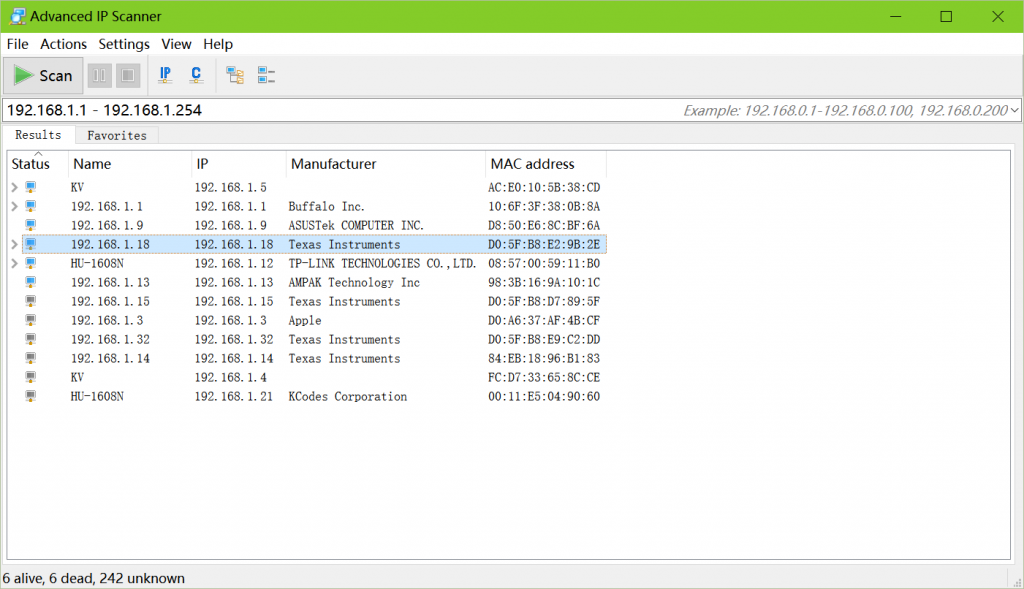
This is a guide for how to find out the IP address of the miner. There are several ways to get the IP address of your miner:
- Find the IP address in your Router Admin Dashboard
- Use IP Scanning Software
- Use Self IP Report
We will introduce them one by one in this tutorial. We will take bitcoin miner as an example which applies equally to other cryptocurrency miners, such as litecoin miners, dash miners etc.
Find the IP in your Router Admin Dashboard
Well, the first and the best way to get the IP of your miner is to log in the admin dashboard of your router and check the IP there. The steps are:
- First, you need to know how to log in your router admin dashboard. You can find that information in your router guide.
- Second, connect your miner to the LAN port of your router and power on the miner.
- Third, log in your router admin dashboard. You may need to input your router admin username and password.
- Fourth, Navigate to the “Devices Management” of your router. All devices connected to this router will be shown here. The following picture is a screenshot of the Devices Management in the admin dashboard of a TP-LINK router.

You can either find the IP via the MAC address of your miner. There may be a MAC address attached on the miner for some model. If the MAC address is labeled on your miner, then you could find out the IP address of your miner via the MAC address on the devices management of your router. Then the IP address with the MAC address as labeled on the miner is the IP address of your miner.
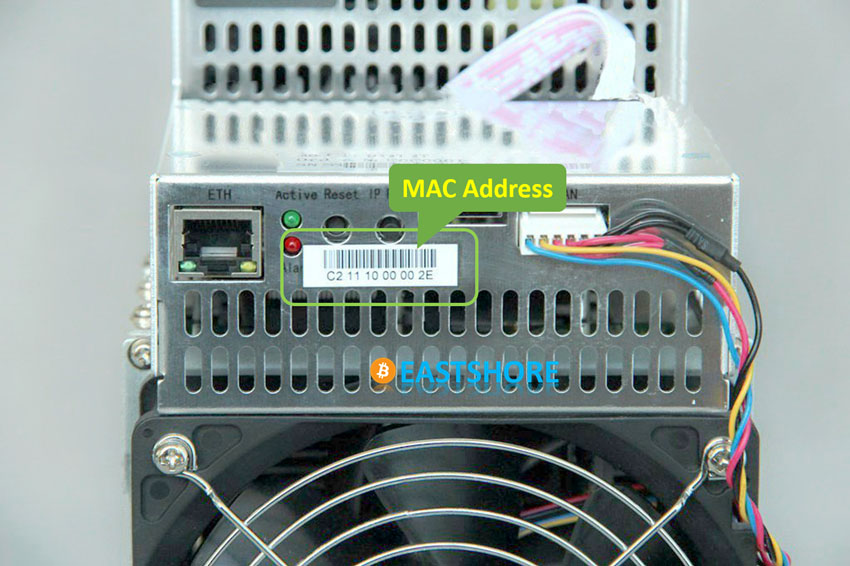
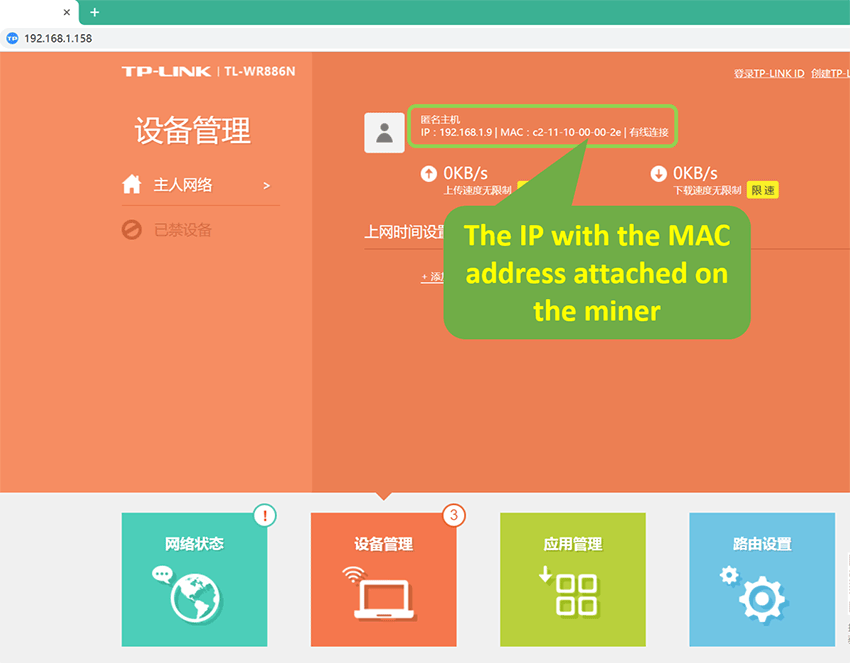
However, if the MAC address is not labeled, you can open your internet explorer(eg. Google Chrome) and try out every IP address in the “Devices Management” of your router.
Use IP Scanning Software
- Download the IP scan software: http://www.advanced-ip-scanner.com/
- Connect the miner to the router via the ethernet cord.
- Disable the firewall and antivirus on your computer (for example, the Kaspersky. In win7 ~ win10, disable the Windows Defender).
- Power on the miner, and wait for about 1~3 minutes (the miner needs time to connect itself to the router. Some miners may need longer time (1~7 minutes) to connect itself to your network).
- Find Out Your Home Internet Setting: [Windows] While your computer is connected to the Internet, go to the Command Prompt and type “ipconfig” then press “ENTER” Key. This will give you the network information you’ll need later. Please write it down! In our test, the “Default Gateway” (that’s the IP of the router) is “192.168.1.1”, so in the following tutorial, we will take “192.168.1.1” as an example.
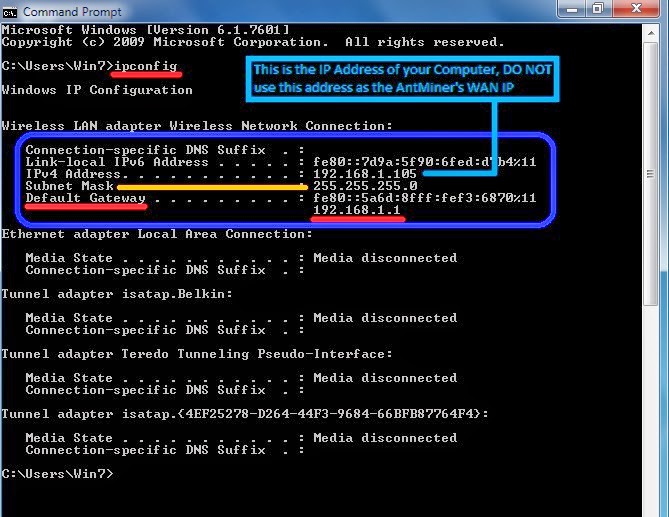
- Open the IP scanning software you just downloaded.
- Set the IP Scanning Range:
- In our test, the IP of the router is “192.168.1.1“, so we set it as “192.168.1.1 – 192.168.1.254“;
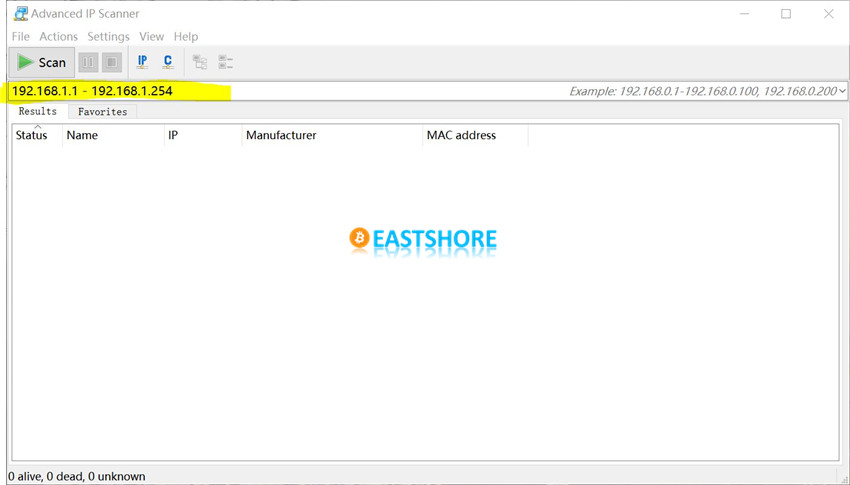
- If your router IP is “192.1.0.xxx” (for example 192.168.0.100), you should set the range as “192.169.0.1 – 192.168.0.254“;
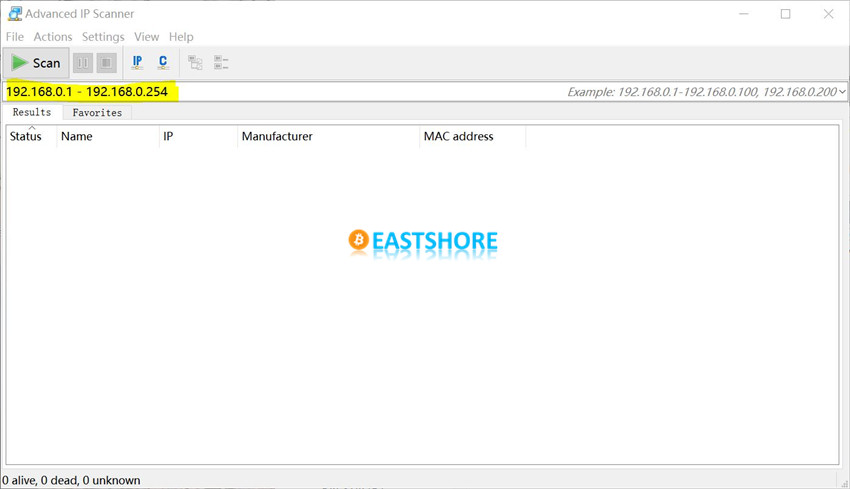
- If your router IP is “192.1.2.xxx” (for example 192.168.2.10), you should set the range as “192.169.2.1 – 192.168.2.254“;
- …And so on…
- In our test, the IP of the router is “192.168.1.1“, so we set it as “192.168.1.1 – 192.168.1.254“;
- Click button “Scan“.
- The following picture shows a scanning result of a miner. The IP of this miner is “192.168.1.16” which shows up after the miner gets connected.
- You can also try every IP address if you are not very sure which IP is the miner.
- If you can’t scan out the IP, that’s maybe because the IP of the miner is occupied by other devices in your network, disconnect other devices from your network and try again.
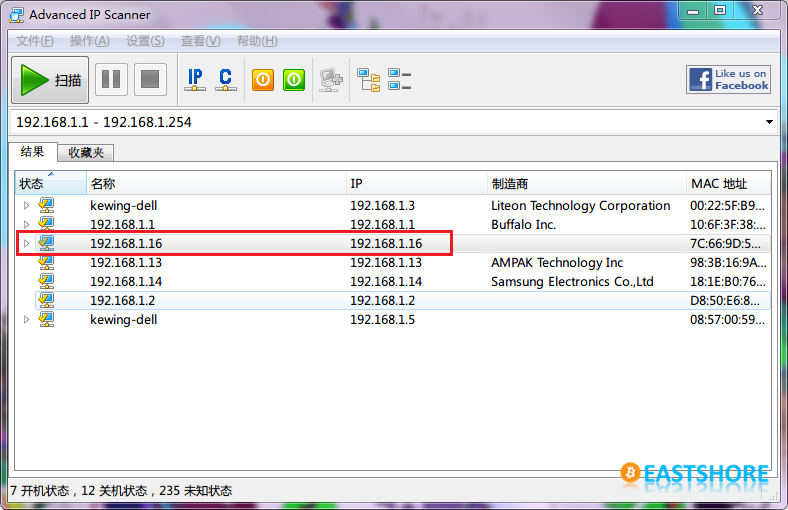
- Let’s take Antminer as an example: The below picture is a scanning screenshot of the Antminer.
- Sometimes, it is shown as “Texas Instruments, Inc“:
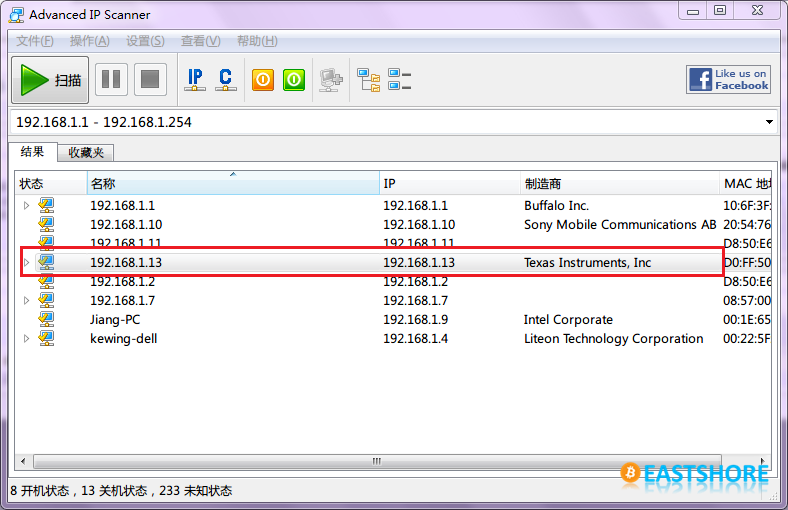
- Sometimes, there is no information about the manufacturer.

- Sometimes, there may be a random name (depends on your network) .
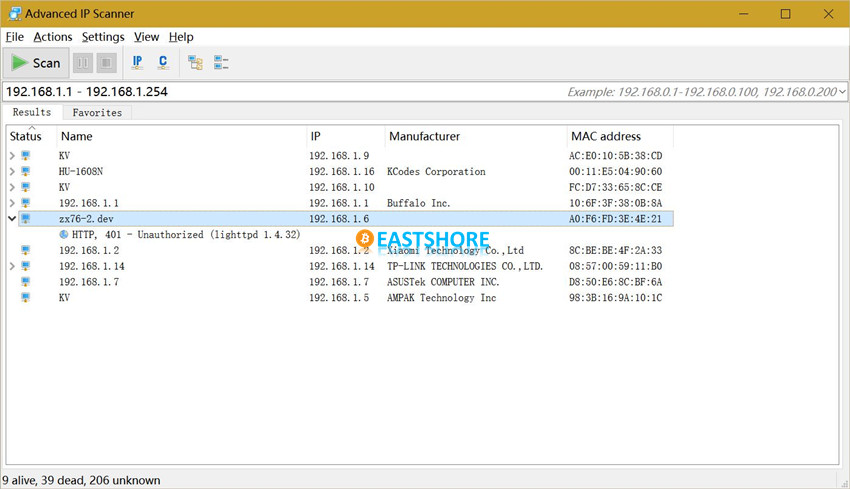
- Whatever it is shown as, you can just click the little triangle ahead to see what the device is. For Antminer, it may be shown as “antminer Configuration” .
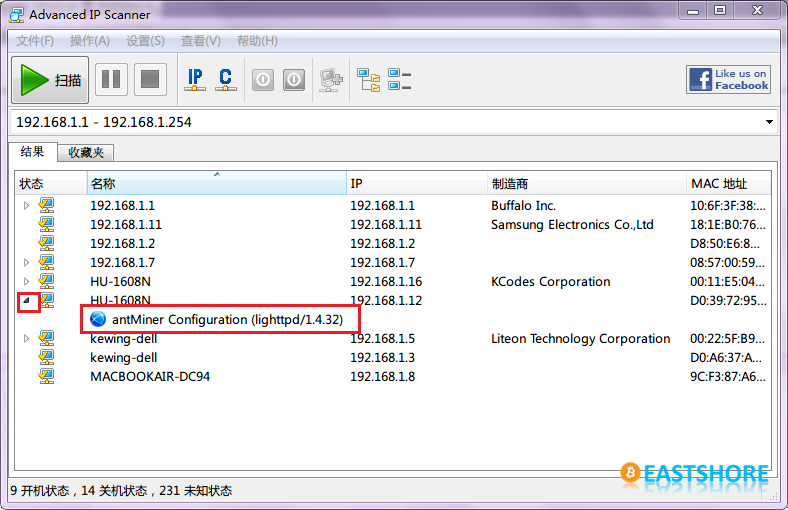
- Or, it just showed as “HTTP, 401…” or something like this after you click the little triangle before the IP address.
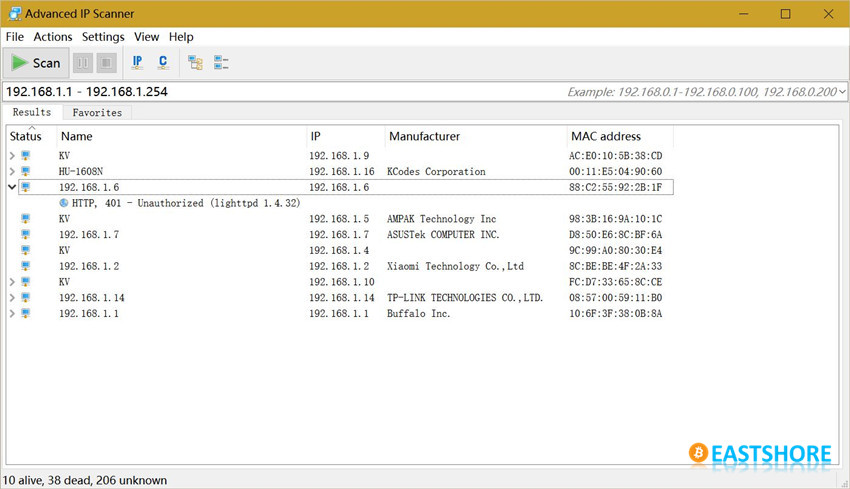
- If you don’t know which one is the IP address of the miner, just try out every IP address you scanned out.
- In some complex networking environment (for example, there are more than one routers working in a WDS networking), you may need to scan more than one times (for example, 2~5 times scanning) to get the IP address of your miner.
Use Self IP Report
- Download the “IP Reporter” software (This software is ONLY for some kind of Antminer): IPReporter.exe
- There is an “IP Report” button on the front side of Antminer T9+.
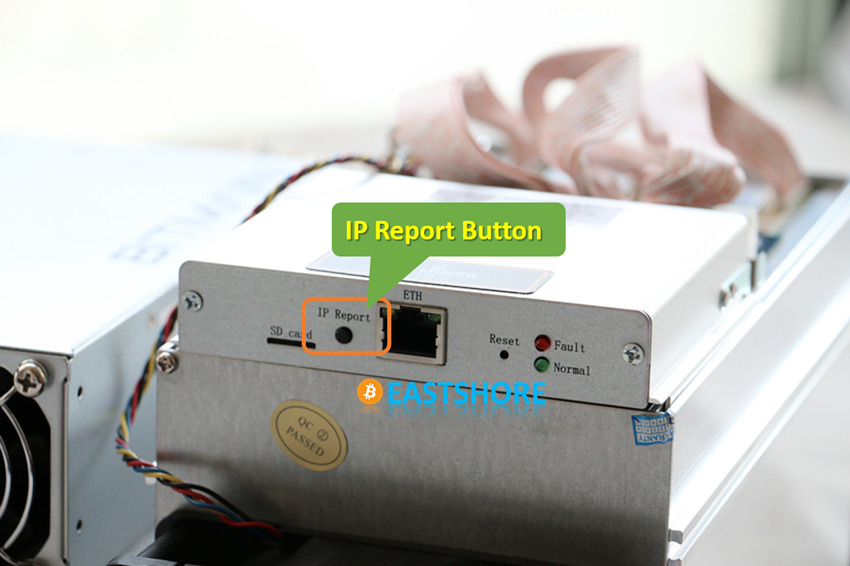
- Make sure your computer and the miners are under the same network.
- Power on the miner, and wait for about 1~3 minutes (the miner needs time to connect itself to the router. Some miners may need longer time (1~7 minutes) to connect itself to your network).
- Run the software “IP Reporter.exe“, click the “Start” button.
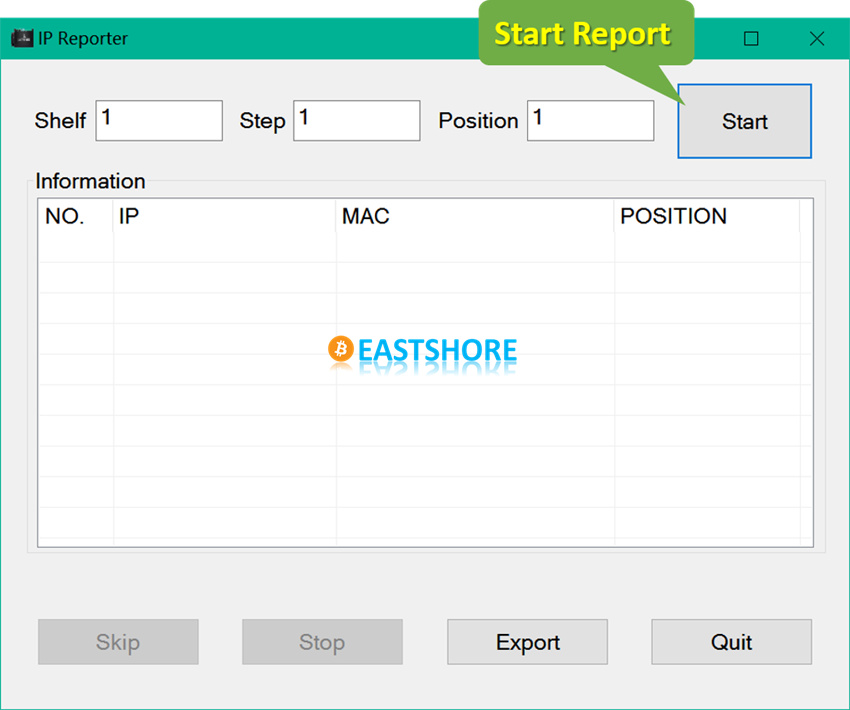
- Press the “IP Report” button on the miner until the red light blinks.
- The IP address of the miner will be shown on your computer by the “IP Reporter” software.
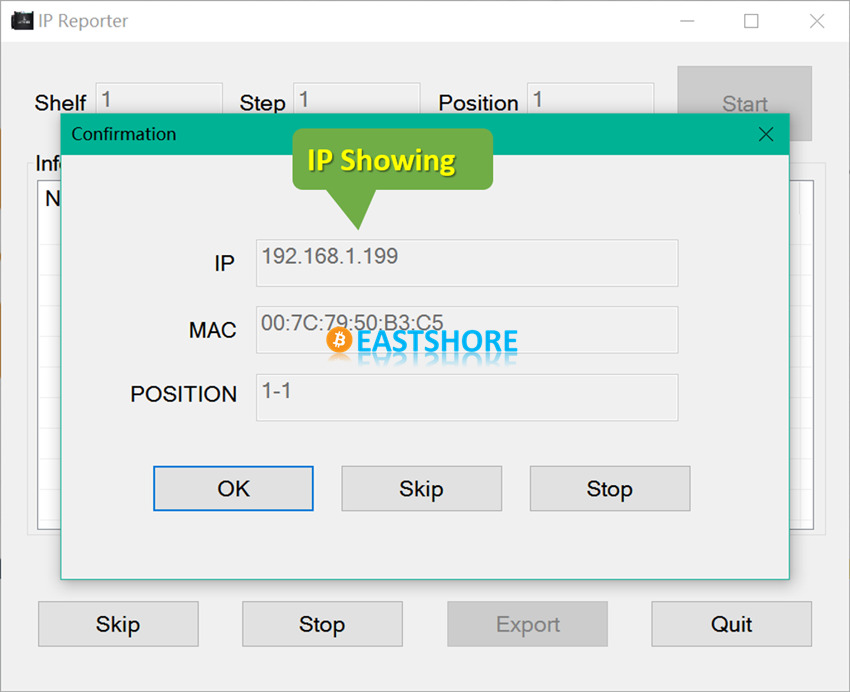
Notes:
- This is only applicable to certain models.
- The {IP report} only applies to the miner with the DHCP IP protocol. It may not work with “Static” IP address.
Still can’t scan out the IP address of the miner?
- Confirm if your miner has a default(or static) IP address(not a DHCP IP protocol)? The IP address may not be detected by the ways above if the miner is of a default/static IP address.
- Check if your miner is connected to the LAN port of your router.
- Wait patiently before you run your IP scanning software.
- Reset your miner (for example, your miner is second-handed) . See here for how to reset: https://www.eastshoremining.com/how-to-reset-antminer-s5/ (After you reset the miner, scan the IP address again.)
- Plug out all your devices on your network, and scan again.
- Disable the firewall and antivirus on your computer, for example, the Kaspersky. In win7 – win10, close the Windows Defender.
- Change to Windows XP, and try again the scanning. (one of our customers get such scanning problem on win 10, when he changed to win XP, the IP is scanned out.)

Pingback: Troubleshooting for Antminer: Controller & Fan | EastShore Mining Devices
Pingback: How to reset Antminer S5 | EastShore Mining Devices
Pingback: Algorithm Odocrypt Now Supported by FPGA Miner AGPF SK1 | EastShore Mining Devices
Pingback: Unboxing and Review for Bitcoin Miner Whatsminer M21 | EastShore Mining Devices
Pingback: Tutorial: FPGA Miner AGPF SK1 Multi-algorithm Supported | EastShore Mining Devices
Pingback: Tutorial: ZigMiner Z1 Pro 13GH Lyra2rev2 Miner | EastShore Mining Devices
Pingback: Evaluation on Programmable Wireless Silent FPGA Miner AGPF SK1 | EastShore Mining Devices
Pingback: Tutorial: Innosilicon T2 Turbo Bitcoin Miner | EastShore Mining Devices
Pingback: Tutorial: FusionSilicon X1 12.5GH Lyra2rev2 Miner | EastShore Mining Devices
Pingback: Tutorial: Antminer S3 441GH @ 340w bitcoin miner | EastShore Mining Devices
Pingback: Tutorial: Antminer C1 1.08TH @ 810w bitcoin miner | EastShore Mining Devices
Pingback: Tutorial: Antminer S5+ 8.9TH @ 3436w bitcoin miner | EastShore Mining Devices
Pingback: Tutorial: Antminer S5 1.15TH @ 590w bitcoin miner | EastShore Mining Devices
Pingback: In-depth Evaluation on Dismantling of Goldshell X5 Litecoin Miner | EastShore Mining Devices
Pingback: Tutorial: Avalon 6 3.5TH @ 1050w bitcoin miner | EastShore Mining Devices
Pingback: Review for Whatsminer D1 Decred Miner | EastShore Mining Devices
Pingback: Review for Canaan Mining Heater | EastShore Mining Devices
Pingback: Introduction and Tutorial for WhatsMiner M10 | EastShore Mining Devices
Pingback: Tutorial for Antminer S9 Hydro Water Cooling Bitcoin Miner | EastShore Mining Devices
Pingback: Tutorial: Baikal Giant-B Siacoin miner SC/LBC/PASC all supported | EastShore Mining Devices
Pingback: Tutorial: AntRouter R1 - a wireless networking device and a bitcoin miner | EastShore Mining Devices
Pingback: Tutorial: Innosilicon A4+ LTCMaster 620MH with 750w Litecoin Miner | EastShore Mining Devices
Pingback: Tutorial: Bitcoin Miner Ebit E9 6.3 TH/s @ 882w ASIC Miner | EastShore Mining Devices
Pingback: Tutorial: General Mining Guide & TroubleShoot for Antminer Models | EastShore Mining Devices
Pingback: Tutorial: Antminer L3 Litecoin Miner 250MH @ 400w for Scrypt Mining | EastShore Mining Devices
Pingback: Tutorial: Baikal Giant-A900 X11 Miner 900MH @ 217w Dash Miner | EastShore Mining Devices
Pingback: Tutorial: X11 ASIC Miner Baikal Mini 150MH @ 40w Dash Miner | EastShore Mining Devices
Pingback: Tutorial: X11 ASIC Miner PinIdea Dr2 450MH @ 335w Dash Miner | EastShore Mining Devices
Pingback: Tutorial: Antminer S7 4.37TH @ 1293w bitcoin miner | EastShore Mining Devices
Pingback: Tutorial: Antminer S9 11.85TH @ 1172w 16nm bitcoin miner | EastShore Mining Devices
crash.btcminer
Is it necessary for the router to be 192.168.1.1 or is it just necessary for all devices to be the same; e.g. my router is 10.1.1.1 and all other devices are 10.1.1.X
Thanks
Crash
admin Post author
It is not necessary for the router to be 192.168.1.1. You only need to connect all the devices to the same router. We just take 192.168.1.1 as an example.
If your router is 10.1.1.1, then the IP of your miner should also be 10.1.1.x. After you scanned the IP, use the scanned 10.1.1.x (NOT 192.168.1.x) to log in the configuration page of the miner.
crash.btcminer
Thanks